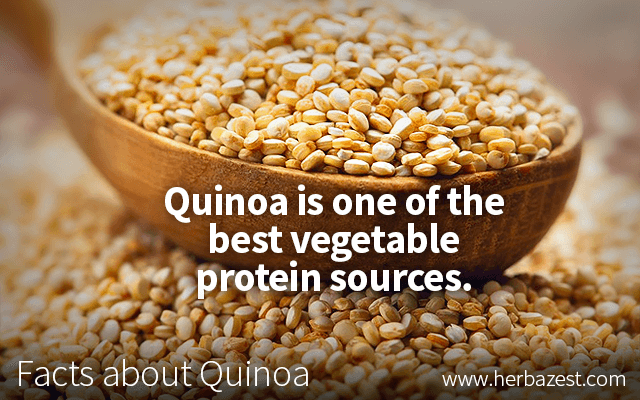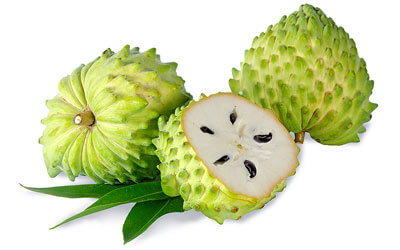Did you know that quinoa has been successfully used as a bioinsecticide? Or that it can be cooked in less than 20 minutes into a wholesome meal? Keep reading to discover more interesting facts about this nutritious and versatile seed.
Botanically, quinoa (Chenopodium quinoa) is considered a pseudo-grain or pseudo-cereal. What many might not know is that the quinoa seed is actually a fruit.
Quinoa seeds are round, flat, approximately 0.06 - 0.15 inches (1.5 - 4 mm) in diameter, and their color can vary greatly depending on the variety. There are approximately 250 varieties of quinoa, which can vary from white, gray, yellow, red, purple, and violet, though white quinoa, red quinoa, and black quinoa are the most common.1
The quinoa plant is native to the Andean region of South America. In fact, it is thought to have been domesticated around Lake Titicaca.
Quinoa, meaning "mother grain" in the indigenous language, was a staple crop of the Incas and is still an important food for the Quechua and Aymara peoples of the Andes.
Inca warriors often ate balls of quinoa and fat for sustained energy when marching across the Andes.
When the Spaniards first arrived in South America, they perceived quinoa as a peasant food and quickly replaced it with other grains.
Quinoa belongs to the goosefoot or Chenopodiaceae family, which includes Swiss chard, spinach, beets, and lamb's quarters.
The taste and texture of quinoa varies slightly depending on the variety. White quinoa has a mild flavor and fluffy texture, red quinoa is nutty and crunchy, and black quinoa is also crunchy but with an earthy flavor.
Quinoa has been approved by NASA as an ideal food for long-duration space flights due to its versatility and nutrition.
Quinoa is one of the best vegetable protein sources. However, it's not the amount of protein it contains that's unique, but rather its quality.
The fact that quinoa is considered a complete protein is due to its amino acid content. It boasts all nine essential amino acids, with especially high concentrations of lysine, which is deficient in most grains.
Quinoa is an excellent source of nutrition. It offers dietary fiber, unsaturated fat, protein, and many essential vitamins and minerals, including vitamin B9 (folate), calcium, and magnesium.
Quinoa is a drought-resistant crop that is able to thrive on as little as three to four inches (75 - 100 mm) of annual rainfall. In fact, during times of little rainfall, quinoa can actually increase its yields.
Quinoa is gluten-free, making it a significant source of nutrition for people with celiac disease and gluten intolerance.
Quinoa is often used to make flour, flakes, and pop, and it can even be fermented to make alcohol. Most commonly, however, quinoa recipes feature this pseudograin cooked as rice and prepared as cereal or porridge.
Many parts of the quinoa plant are edible, including the seeds, tender leaves, and panicles.
Besides its use as food, quinoa has found applications in the pharmaceutical, cosmetic, and bioinsecticide industries.
The pericarp of quinoa seeds contain bitter, toxic saponins that protect the plant against pests. In order to eliminate them, it is necessary to rinse the seeds before consumption.
Quinoa's antioxidant effects are due to the high levels of phenolic compounds and betacyanins in the seeds. Interestingly, darker quinoa seeds have a higher phenolic concentration and antioxidant activity than lighter seeds.
Today, quinoa is cultivated in more than 70 countries, though the world's main producers are Peru, Bolivia, and Ecuador.
Sources
- Food Chemistry, Characterisation of phenolics, betanins and antioxidant activities in seeds of three Chenopodium quinoa Willd. genotypes, 2014
- Food Reviews International, Nutritional Value and Use of the Andean Crops Quinoa (Chenopodium quinoa) and Kaniwa (Chenopodium pallidicaule), 2003
- Journal of Nutrition and Food Sciences, Quinoa (Chenopodium quinoa Willd), from Nutritional Value to Potential Health Benefits: An Integrative Review, 2016
- Quinoa: The Everyday Superfood
- The American Journal of Gastroenterology, Gastrointestinal Effects of Eating Quinoa (Chenopodium quinoa Willd.) in Celiac Patients, 2014
- Whole Grains Council, Quinoa – March Grain of the Month
- FAOSTAT, State of the Art Report on Quinoa Around the World in 2013 | International Year of Quinoa 2013 | Uses of Quinoa | Origin and History | Distribution and Production
- Alternative Field Crops Manual
Footnotes:
- Journal of Ecological Engineering. (2022). Seed Quality and Protein Classification of Some Quinoa Varieties. Retrieved August 17, 2022 from http://www.jeeng.net/Seed-Quality-and-Protein-Classification-of-Some-Quinoa-Varieties,143866,0,2.html




